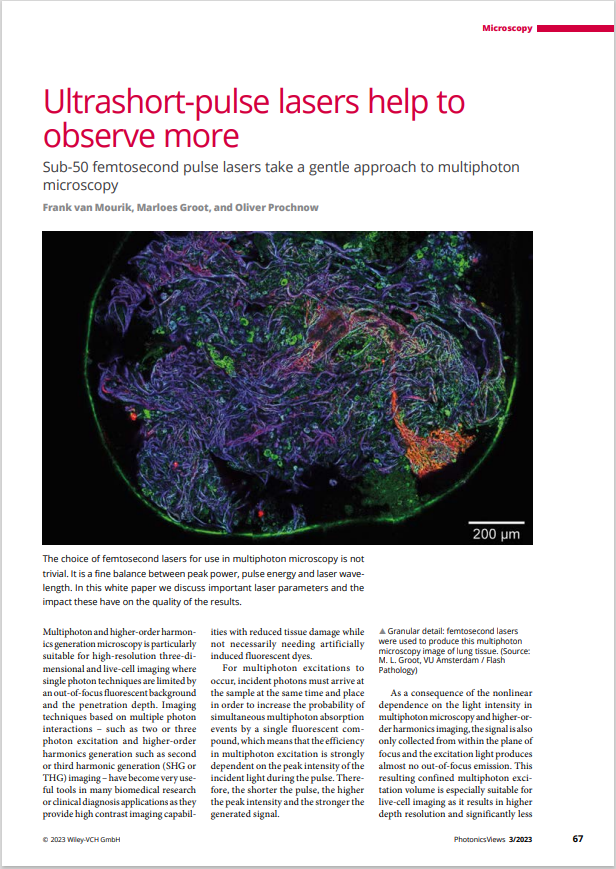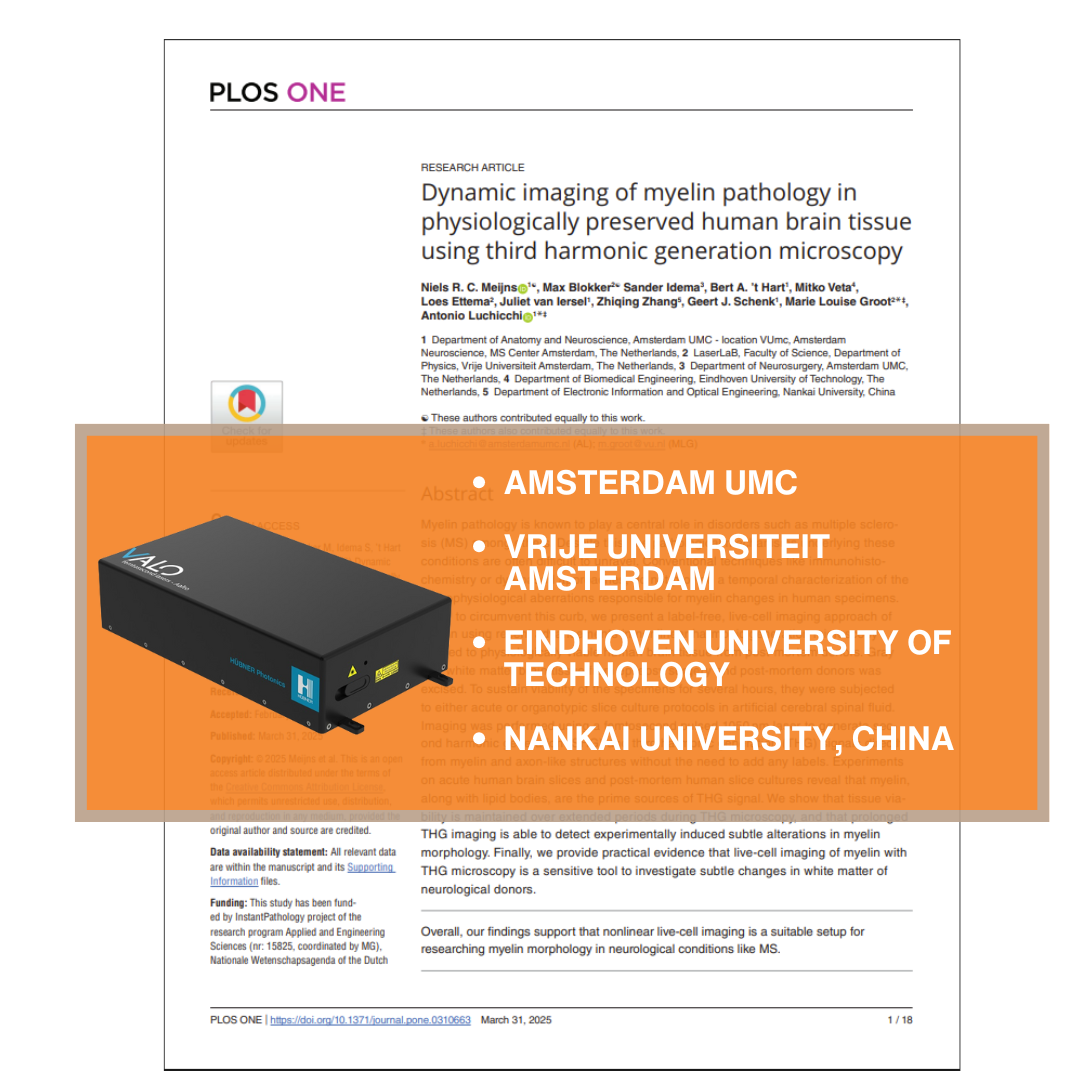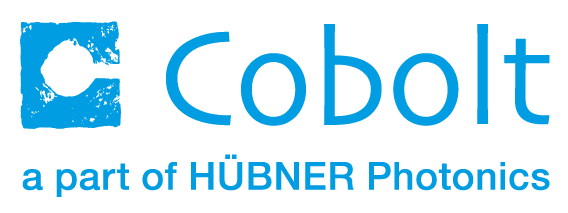Knowledge Bank
Welcome to the HÜBNER Photonics Knowledge Bank! This resource hub is designed to provide valuable insights, technical information, and expert guidance on a wide range of photonics technologies and applications. Whether you’re looking for detailed product manuals, scientific papers, webinars, or technical articles, our Knowledge Bank offers a comprehensive collection of materials to support your understanding and enhance your work in the field of photonics.
Explore our resources and deepen your expertise today!
Raman Spectroscopy
Quantum Technology
Fluorescence Microscopy
Flow cytometry
Brillouin Light Scattering Spectroscopy
Multiphoton Microscopy
Laser technology
Terahertz
More resources
Explore our Publications for practical insights on how our customers are leveraging the power of our lasers in their projects.
Customer publications, Our publications
Application: Multiphoton microscopy
Product line: VALO
Wavelength: Femtosecond
A gentle approach to multiphoton microscopy
Sub-50 femtosecond pulse lasers take a gentle approach to multiphoton microscopy.
Read summary of article "A Gentle Approach to Mutiphoton..."
Customer publications
Application: Kerr effect spectroscopy
Product line: VALO
Wavelength: Femtosecond
Compact Sub-50 fs Lasers for Time-Domain Kerr-Effect Spectroscopy
In this white paper a compact, commercially available fiber‑based femtosecond laser displaying a 34 fs pulse duration is used to verify the capability of such laser sources for both optical Kerr effect (OKE) spectroscopy and Raman-induced Kerr effect spectroscopy (RIKES).
Customer publications
Application: Third Harmonic Generation (THG) Microscopy
Product line: VALO
Wavelength: 1050 nm, Femtosecond
New Technique Offers Dynamic Insights into Myelin Pathology
Researchers introduce Third Harmonic Generation (THG) Microscopy as a novel method to visualize myelin without the need for labels.






